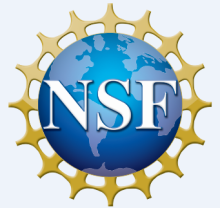
This program will open new opportunities to transform innovative neuroscience findings and theories from into new frameworks that distill and apply biological learning principles to the design of engineered learning systems.
The recent period of growth and excitement in neuroscience has provided many new insights and ways to understand the complexity of biological learning processes. This surge of neural data, methods, and theories has emphasized the critical interplay between spatial and temporal dynamics across time scales from milliseconds to lifetimes, and spatial scales from subcellular structures to macroscale brain systems. However, the sources of the unparalleled learning efficiency supported by brain mechanisms across many species have remained unclear, particularly in terms of energetic and data-sampling requirements.
To address this gap, the National Science Foundation (NSF) has recently released a solicitation under the FY22/23 Emerging Frontiers in Research and Innovation (EFRI) Program (NSF 21-615) called Brain-Inspired Dynamics for Engineering Energy-Efficient Circuits and Artificial Intelligence (BRAID). The working hypothesis of BRAID is that the characteristic capabilities of biological learning far exceed mainstream machine learning hardware algorithms and can inspire innovations to meet the urgent needs of mission-critical engineering applications. BRAID supports interdisciplinary research with the aim of fostering new engineering-driven scientific approaches to the design and development of brain-inspired engineering learning systems.
Any BRAID proposal submitted in response to the EFRI solicitation must address at least two of the following three threads:
-
Thread 1: Theoretical Neuroscience
-
Thread 2: Brain-informed Hardware Design
-
Thread 3: Algorithmic Learning for Resilient Adaptive Technologies
For more information, please view the NSF program solicitation. A letter of intent is due by September 12, 2022. Preliminary proposal is due by October 13, 2022. If invited, a full proposal will be due by February 7, 2023.
A webinar was held on October 15, 2021, to describe the goals and focus of the solicitation, help investigators understand its scope, and answer any questions potential PIs may have. Webinar slides are also available.
To stay up to date on all BRAIN Initiative Alliance (BIA)-related funding opportunities, please visit the BIA website.
